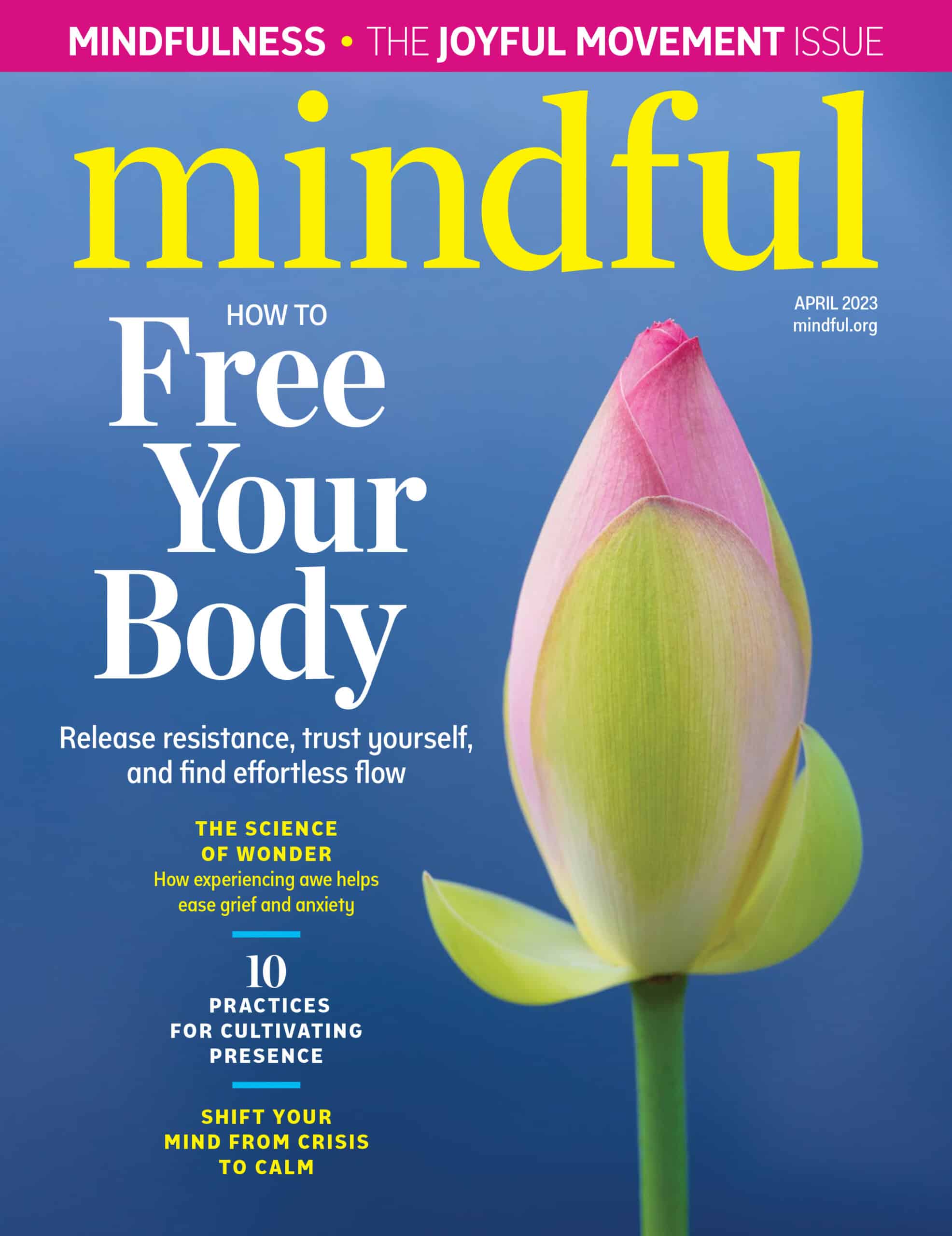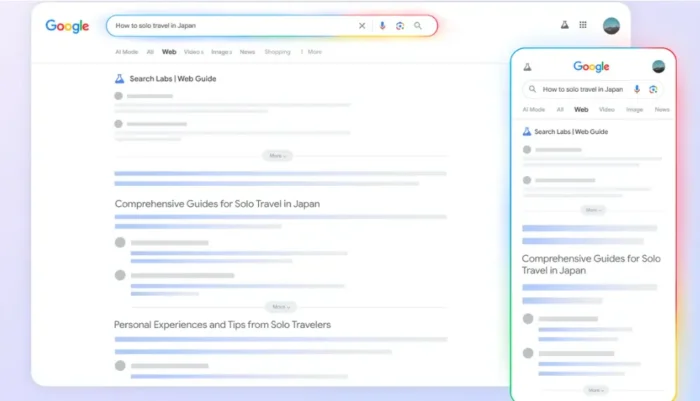12-Minute Meditation: A Guided Practice to Cultivate Kinder Self-Talk
When we notice our inner voice, and notice when we’re focusing on negative thoughts, we can cultivate a habit of self-compassion. The post 12-Minute Meditation: A Guided Practice to Cultivate Kinder Self-Talk appeared first on Mindful.

When we notice our inner voice, and notice when we’re focusing on negative thoughts, we can cultivate a habit of self-compassion.
By Adam Ortman October 20, 2023 Calm AdobeStock/Wayhome Studio
AdobeStock/Wayhome StudioOne way I like to think of inner voice is as the language or talk inside of our minds that we use to tell the story of what’s happening to ourselves. This story can function a bit like virtual reality goggles, where when we put them on, sometimes it’s hard to actually see the full scope of what’s happening. It’s a version of reality that might not be the whole story. But if we can start to see around the edges of those goggles, our perspective on what’s happening expands and becomes more clear. We experience a bit more freedom. So this practice will be a process of exploring that voice and exploring how to see around its edges.
A Guided Meditation to Explore Your Inner Voice
12 Minute Meditation: A Guided Meditation to Cultivate Kinder Self-Talk With Adam Ortman
As we begin, I encourage you to find a posture that feels comfortable for you. We’re going to be paying close attention in this practice. And so it’s a good idea to find a posture that allows you to feel awake and maybe even a little bit energized. You can have your eyes open or closed. For this first part of the practice, we’re just going to start to explore our inner voice as it helps us to pay attention. I’ll encourage you to use some phrases to help you notice your breath. So as you breathe in, I encourage you to think the words “inhale, body.” As you breathe out, thinking the words “exhale, body.” Try this for a few breaths, finding an inhale and exhale that feel comfortable. See if you can keep this phrase, “inhale, body,” on the breath in and “exhale, body,” on the breath out, at the forefront of your mind. Then shift that phrase to “inhale, belly,” as you breathe in and “exhale, belly” as you breathe out. And then “inhale, chest,” and “exhale, chest.” And then “inhale, nose,” and “exhale, nose.” Now I encourage you to choose your favorite phrase. Body, belly, chest, or nose, and stick with it just for a few moments. If you do this, you’ll notice that your inner voice can be useful. It can help us frame what’s happening. It can even help direct our attention to something we want to pay attention to. Now we’re going to explore a bit more about this voice. As I talk, see if you can stick with the inhale and exhale process, but we’re going to play. As you think “the word of your choice, inhale,” and “the word of your choice, exhale,” does it seem as though that voice is coming from a certain location? Is it coming from somewhere inside of your head? Somewhere outside of your head? Where do you notice it? Does it have a certain sound to it? Does it sound like your voice? Like somebody else’s voice? Does it have a volume? Is it loud or is it quiet? Does it change its volume? Now we’ll see if we can shape it. For the next couple of breaths see if you can think that word or phrase in a really deep voice, a voice that’s deeper than yours. Then see if you can think that phrase in a really high voice, a voice that’s a lot higher than yours. See if you can think that voice in a singing voice. And then back to whatever kind of voice you’d like, whether it’s a voice that sounds like your own or something else. When we do this, we notice that we do have some control over our inner voice. When we choose to exert that control,we can shape it a bit. We can shape what it says and even what it sounds like. But maybe you’ve noticed as you’ve been doing this practice that the inner voice we choose is not the only inner voice. Maybe distracting thoughts have been arising for you. Maybe occasionally you forget the inhale and exhale and some other voice comes in. Am I doing it right? or When this is going to be over? or something completely outside of what you’re doing. There’s the voice we intendand then there’s the voice that seems to play on autopilot. We’re going to do a little practice to see if we can tell the difference between the intended voice and the autopilot voice. Before we get there, let’s reset because we’ve been at this for a little bit. If your eyes are closed, I encourage you to open them for a moment, and if they’re open maybe look around. Maybe shake one hand and shake the other. Roll your shoulders a little bit, sway your spine, roll your neck. Now we’re going to find a posture again that feels energized, awake. We’re going to return to feeling the breath. As you breathe in, you notice it in your whole body or your belly or your chest or your nose. As you breathe out, you feel that space in your body settling, softening, releasing. Very, very softly think the word “in” on a breath in, and the word “out” on a breath out. What we’re going to be on the lookout for is any other voice, any other inner talk that might arise. Any talk that we don’t actually intend. Anything that’s different from the “in” and the “out.” Any time you notice another voice like that, just pause for a moment and see if you can notice it. Does it seem like a kind voice? Is it a harsh voice? Is it neutral? Does it seem like nonsense? Does it not actually have anything to do with what you’re doing? However that voice is, just see if you can notice that it’s not reality. It’s just a voice. It’s focused on one little sliver of reality when it could be focused on something else. You can choose whether you give that voice energy or not. Whether it’s pointing you in a direction you want to look or somewhere you really don’t want to pay attention to. So just spend a moment with that in and out of the breath. Picking up on any time a voice sneaks in that’s not the “in” or the “out.” Just notice it. Not to silence it, not to give it energy, just to see if you can pick it up in your attention. When we have a voice in our mind that feels harsh or critical, the fastest way to soothe it isn’t with more harshness or criticism, or even by trying to silence it or push it away. The fastest way to soothe that voice is to notice that it isn’t you, to offer some kindness, and to come back to the present moment. Let’s try that now. Letting yourself breathe in and out, finding a soothing breath. Then any time another voice comes into your mind—maybe it’s actually always there—notice it. Actually turn your attention to that voice for a moment and say inwardly, “thank you for trying to help.” Offer that voice an inward smile and then return to the present moment. Repeat this as many times as you need. The more we practice noticing our thoughts in this way, the more choice we have over the thoughts we energize. We may not totally get rid of our inner critic, but that’s not the point. Our goal here is to see if we can peek outside of the VR goggles and see that there’s a whole world beyond what fits inside of our thoughts. We can visit it whenever we choose to. Coming back into the room that you’re in, noticing the other sounds around. Noticing what you can see and anything that looks delightful that you enjoy looking at. And noticing the settling quality of your own breath.GROW YOUR MEDITATION PRACTICE
Get practices, tips, and special offers delivered straight to your inbox
Phone
This field is for validation purposes and should be left unchanged.
About the author
Adam Ortman
Adam has been a mindfulness and meditation teacher for people of all ages for over a decade. He received a Masters of Divinity degree from Harvard Divinity School for which he focused on secular applications of meditative traditions, and has spent over a year in intensive meditation retreats. He has supported a number of schools in the creation and strengthening of their mindfulness programs, has led workshops and retreats around the US for educators seeking to incorporate mindfulness into their communities, and was a core consultant in the creation of WholeSchool Mindfulness.

 BigThink
BigThink 
































